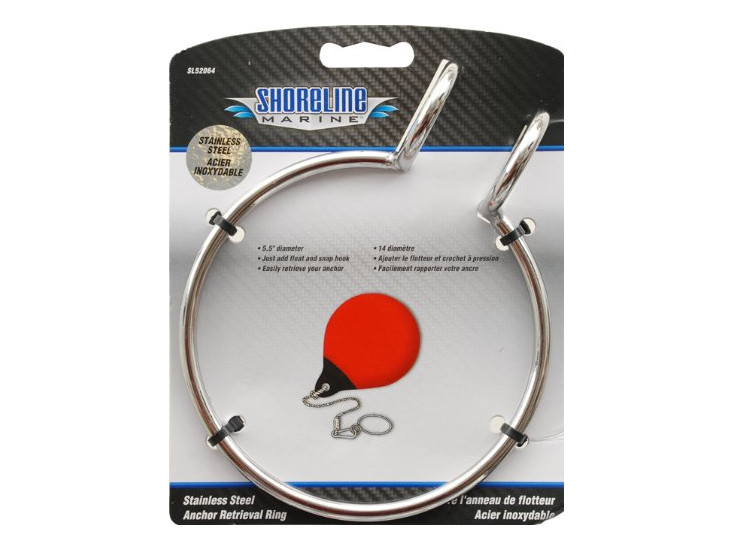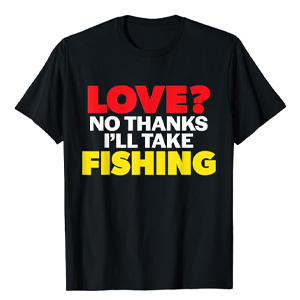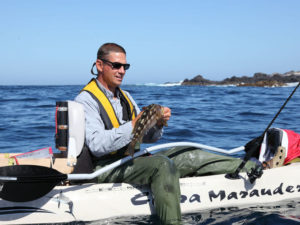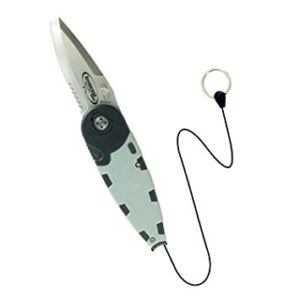Last year was the first time that the FWC crew took a stab at Puget Sound Halibut fishing. It was a great learning experience. Does that sum up our lack of catching any Halibut well enough. We did learn some things though and one was the need to have an anchor puller. With 300’+ of rope out and anchoring in ~200′ of water, pulling a muck covered anchor up sucks. I should know, since as the biggest guy on the boat, I generally did it. This year I solved that problem using a an anchor pulling ring.
We watched other people out there using buoys as were baffled at first as to what they were for. Quite honestly we never anchor the big boat up other then when we are halibut fishing, so we had no experience with it and anchoring the little boat doesn’t really require one.
This Year We Got Smarter About Pulling Anchors
As we started gearing up for this year, an anchor puller was high on my list and I like simple, so my choice was an anchor pulling ring. Obviously there are no moving parts to break, fail, seize up and so on. I like that!
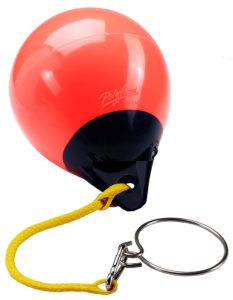 Secondly, anchor pulling rings are relatively inexpensive and about half of what the more fancy ones cost.
Secondly, anchor pulling rings are relatively inexpensive and about half of what the more fancy ones cost.
Third is that a ring style anchor puller doesn’t have to be put on the line before you anchor up. Half the time we are still asleep when we are going fishing it is so damn early and the last thing we need is to forget to thread the anchor puller on.
Fourth is that they anchor pulling ring is pretty forgiving. Honestly this time out we had to add some rope to our anchor line to replace some that we lost and the knot we used to join them was efficient, but not what I would call mariner pretty. I know it would never go through the fancier anchor pullers, but the ring didn’t care about our fist full of knotted rope.
Anchor Puller Buoys
The other essential part of this rig is a float of some kind, typically a 11-18″ buoy with a short piece of rope and a clip. The stores all sell nice red ones and honestly you can save a few bucks by ordering online. In fact, you can buy whole anchor pulling ring assemblies online for only about $80 but I am a cheap bastard and assembled my own.
After looking at the price of buoys and comparing it to what I was already spending the year in replacing equipment and buying a halibut spear, I figured I could just use an old fender that we found a few years ago. It was fairly big an I figured it would float the little anchor we use just fine.
If you want something fancier for a buoy to put on your anchor pulling ring that is fine, I can see why you wouldn’t want an ugly old float on yours LOL.
Pulling Double Duty
That is a pun there… Ok, fine a lousy pun. But since we are halibut fishing, we needed a buoy to go on the line for the halibut spear as well. A quick change clip and the same float works for pulling the anchor and bringing in the halibut that we will eventually (hopefully) catch!
Easy To Use Anchor Puller
One of the things I like most about the ring and float anchor pullers is that they are easy to use. When it is time to go, simply slip the ring over the line, clip on the float and motor past your anchor at about a 30 degree angle. The resistance of the float in the water levers the anchor up out of the sea floor and pulls the line through the ring. When it hits the top, you simply stop and reel it in. No more back breaking pulling. I love it!!!
Where To Buy Anchor Pullers
You can find anchor pullers in most stores, but I prefer to shop online and save some money. It is up to you if you want to pay a little more to support your local store or if you want to save your money and spend your savings locally on more fishing tackle. The second is usually my choice.
Wherever you decide to shop, I highly suggest you get an anchor pulling ring. They are a back saver!

